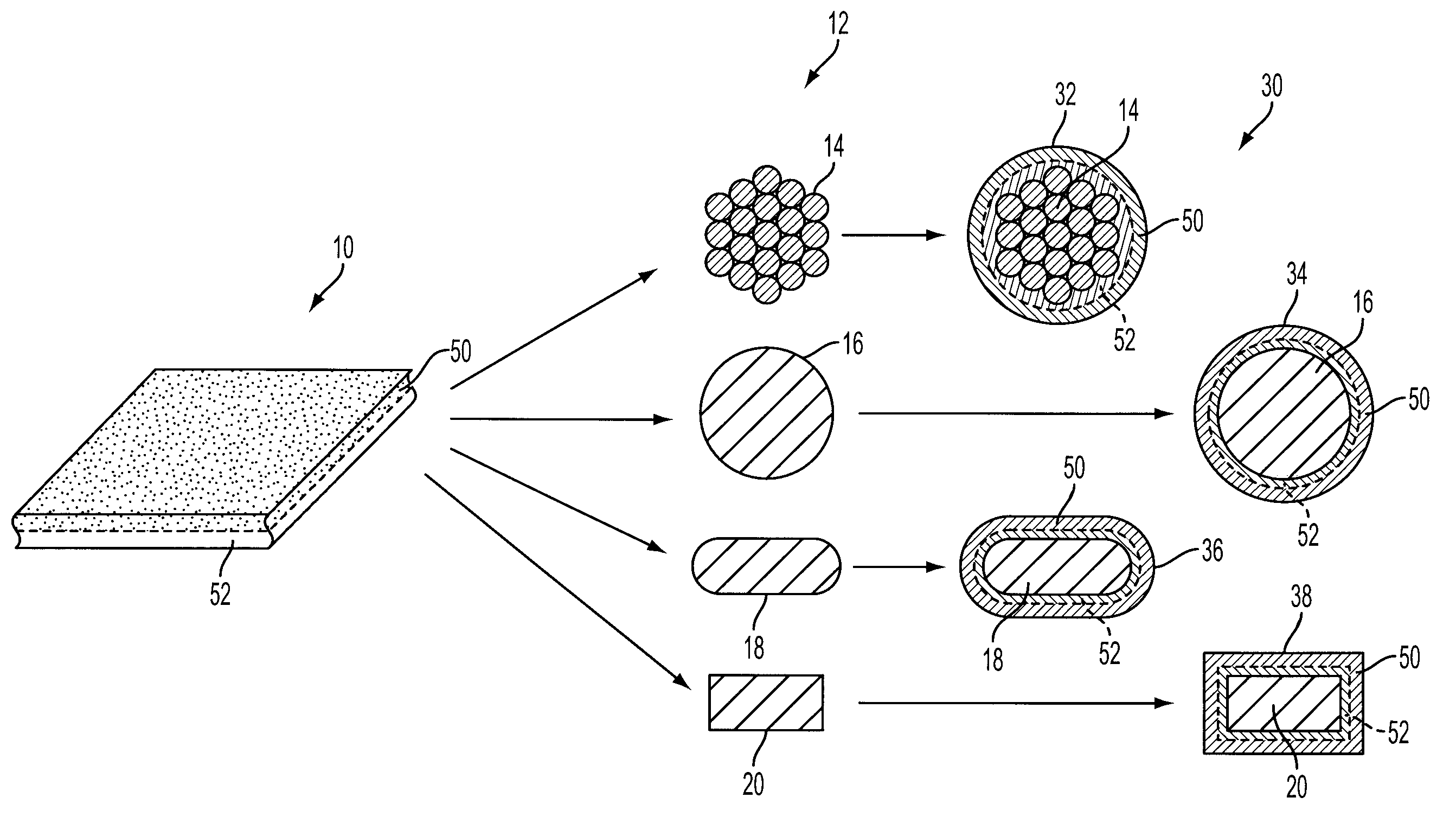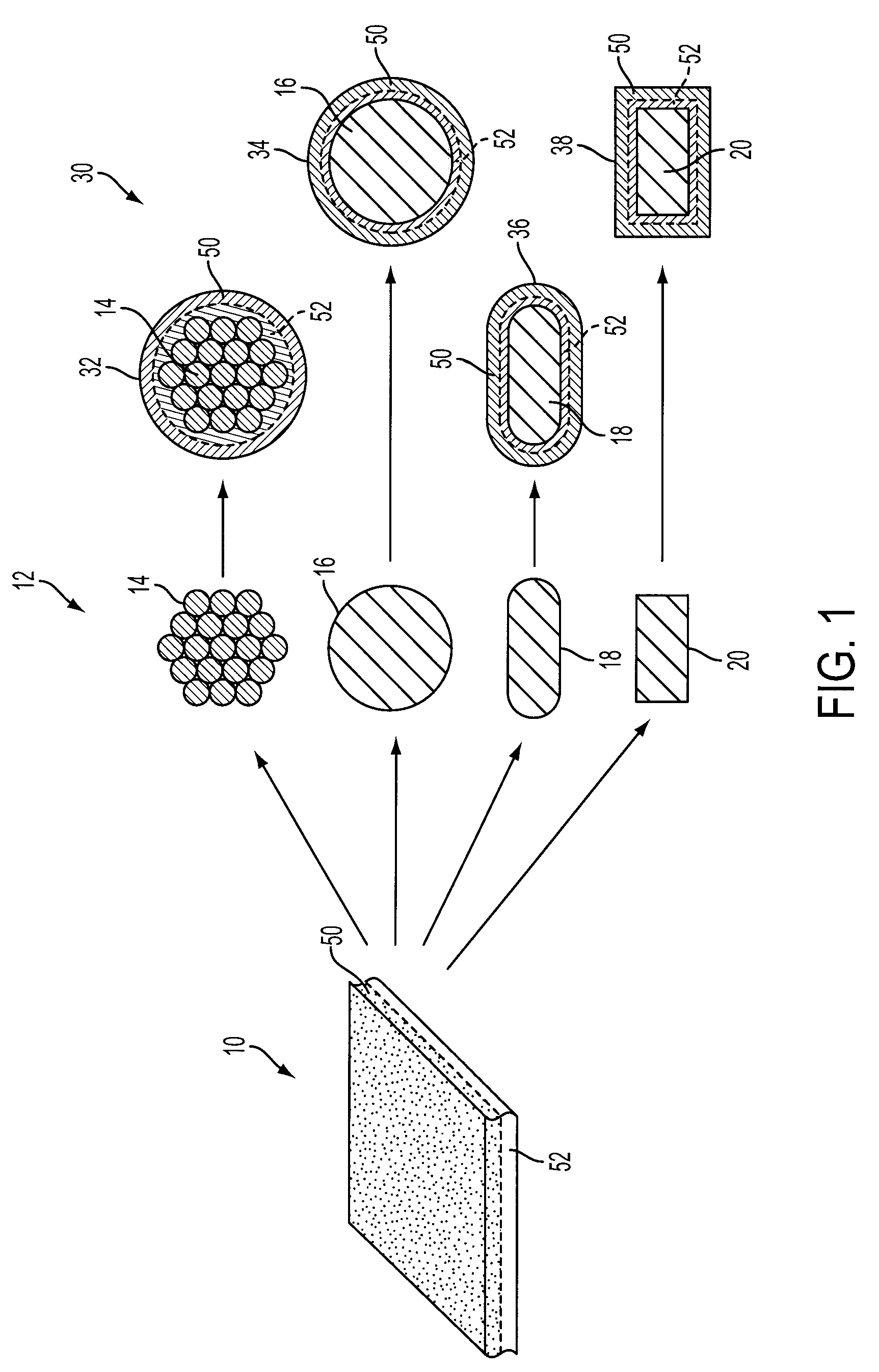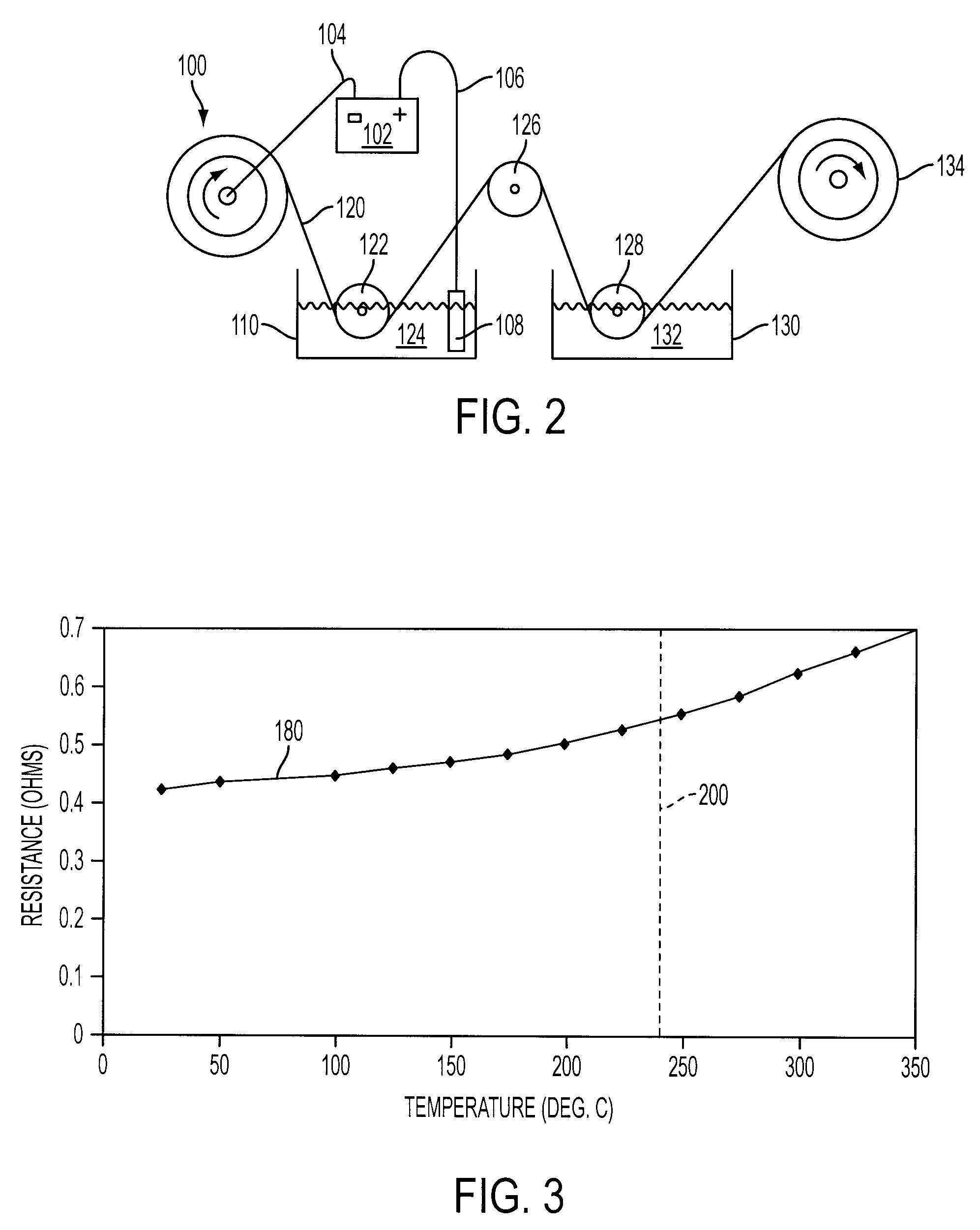Copper conductor with anodized aluminum dielectric layer
a technology of anodized aluminum and conductor, which is applied in the direction of insulated conductors, power cables, cables, etc., can solve the problems of low radial dimensional control, inability to meet the requirements of high current density or severe environment applications, and the skin is too thin to electrically insulate the conductor, etc., to achieve the effect of reducing or eliminating internal stresses in materials, facilitating the formation of conductors, and economic viability to produce in large quantities
- Summary
- Abstract
- Description
- Claims
- Application Information
AI Technical Summary
Benefits of technology
Problems solved by technology
Method used
Image
Examples
Embodiment Construction
)
[0016]As those of ordinary skill in the art will understand, various features of the embodiments illustrated and described with reference to any one of the Figures may be combined with features illustrated in one or more other Figures to produce alternative embodiments that are not explicitly illustrated or described. The combinations of features illustrated provide representative embodiments for typical applications. However, various combinations and modifications of the features consistent with the teachings of the present disclosure may be desired for particular applications or implementations.
[0017]For the representative process / product illustrated in FIG. 1, at least one uniform thickness thin sheet of aluminum 10 is formed to envelop a copper or copper alloy core 12, which may be formed in any of a number of geometries including but not limited to generally circular 16, oval or ribbon-shaped 18, or square / rectangular 20. For example, aluminum sheet 10 may be between about 0.0...
PUM
| Property | Measurement | Unit |
|---|---|---|
| temperatures | aaaaa | aaaaa |
| thickness | aaaaa | aaaaa |
| thick | aaaaa | aaaaa |
Abstract
Description
Claims
Application Information
 Login to View More
Login to View More - R&D
- Intellectual Property
- Life Sciences
- Materials
- Tech Scout
- Unparalleled Data Quality
- Higher Quality Content
- 60% Fewer Hallucinations
Browse by: Latest US Patents, China's latest patents, Technical Efficacy Thesaurus, Application Domain, Technology Topic, Popular Technical Reports.
© 2025 PatSnap. All rights reserved.Legal|Privacy policy|Modern Slavery Act Transparency Statement|Sitemap|About US| Contact US: help@patsnap.com



